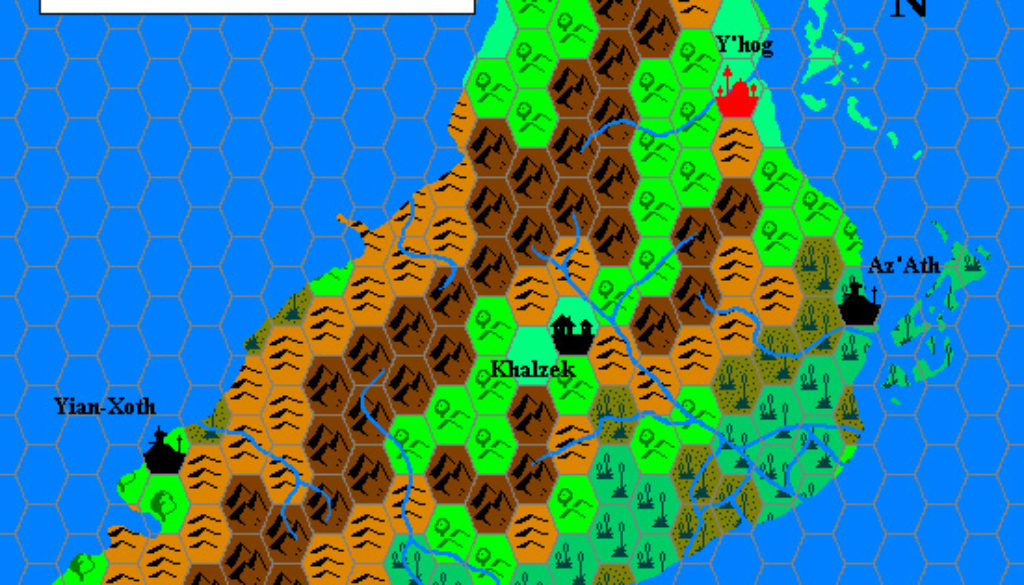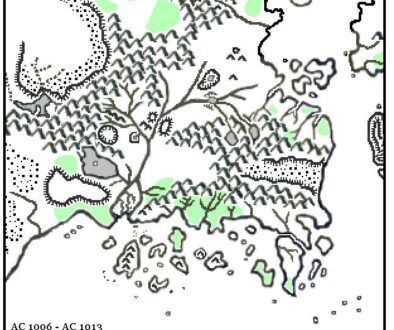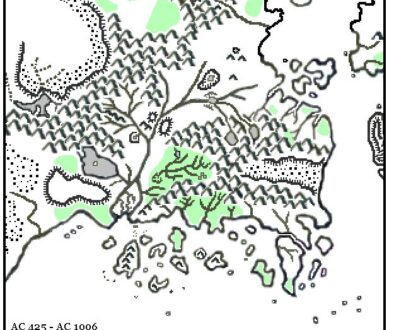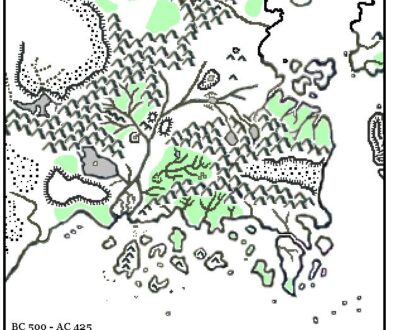Geoff’s Y’hegg-T’uhath, 24 miles per hex
The underside of Geoff’s creation of Lhomarr was Y’hegg-T’uhath, land of the carnifex and bastion of dark worship of the Outer Beings. These works took Tom Moldvay’s carnifex from module M3 and expanded them into a whole society in the primeval world, 8,000 years before the Gazetteer era.
Map-wise, this one is the pair of Lhomarr, although separated by more than a year a half — and you can see slight tweaks to the palette, most notably in the hill hexes. While Lhomarr was an entirely original creation, for Y’hegg-T’uhath Geoff used an island from the Hollow World Set’s Precataclysmic Map that doesn’t appear on 1,000 AC-era maps. Of course the terrain itself is entirely Geoff’s invention.
This map didn’t make it to the Vaults of Pandius until 2020, although it was featured in Thibault Sarlat’s map archive for many years. Francesco Defferrari would later adapt it to a slightly different format on one of his maps of ancient Mystara.
Fan-made Map by Geoff Gander (March 2000)
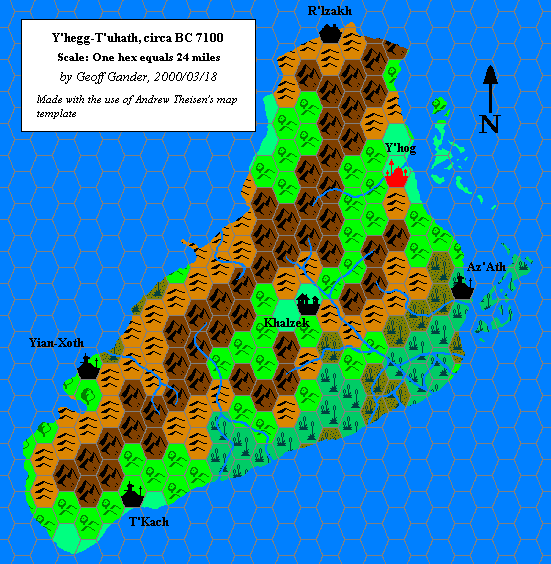
This is an original map created by one of Mystara’s excellent fan cartographers. For more information on the cartographer, including a gallery of all their maps, see also Appendix M: Mappers of Mystara.
Sources
- Original work
Secondary Sources
- Carnifex Language current as of 16 December 1999 (Vaults of Pandius)
- Threshold Magazine Issue #5 (October 2014)
- Y’hog – The Blackest Port in the West (Vaults of Pandius)
References
- All of Geoff’s maps at the Atlas of Mystara
- Geoff’s entry in Appendix M: Mappers of Mystara
- Geoff’s author page at the Vaults of Pandius
Chronological Analysis
This is a fan-made map. It was published in March 2000. The updated Atlas version of this map is not yet available. See also Appendix C for annual chronological snapshots of the area. For the full context of this map in Mystara’s publication history, see the upcoming Let’s Map Mystara 2000. (Please note that it may be some time before the project reaches this point.)
The following lists are from the Let’s Map Mystara project. Additions are new features, introduced in this map. Revisions are changes to previously-introduced features. Hex Art & Fonts track design elements. Finally, Textual Additions are potential features found in the related text. In most cases, the Atlas adopts these textual additions into updated and chronological maps.
Coming Soon

